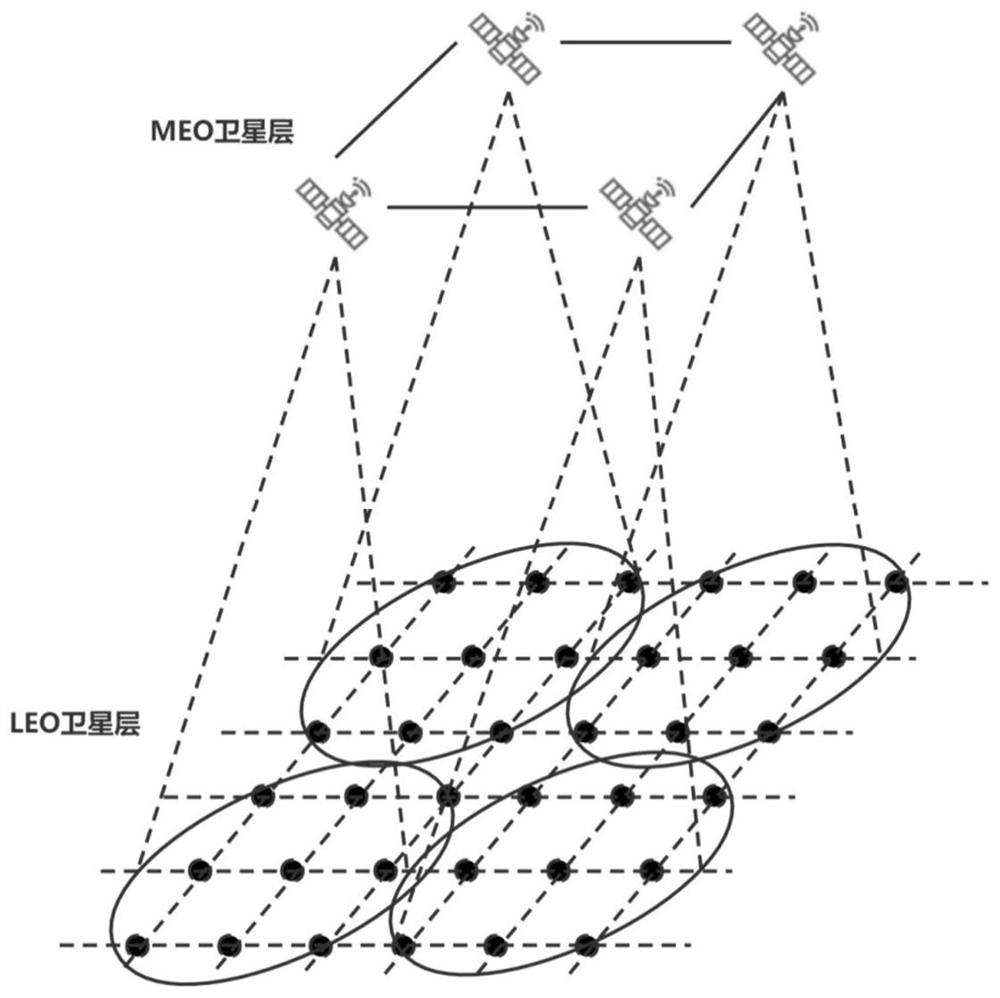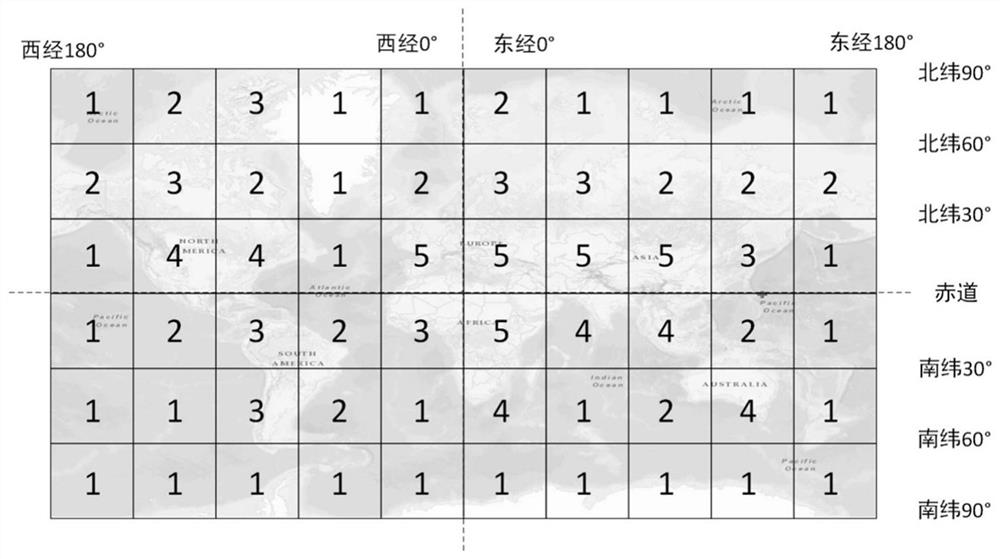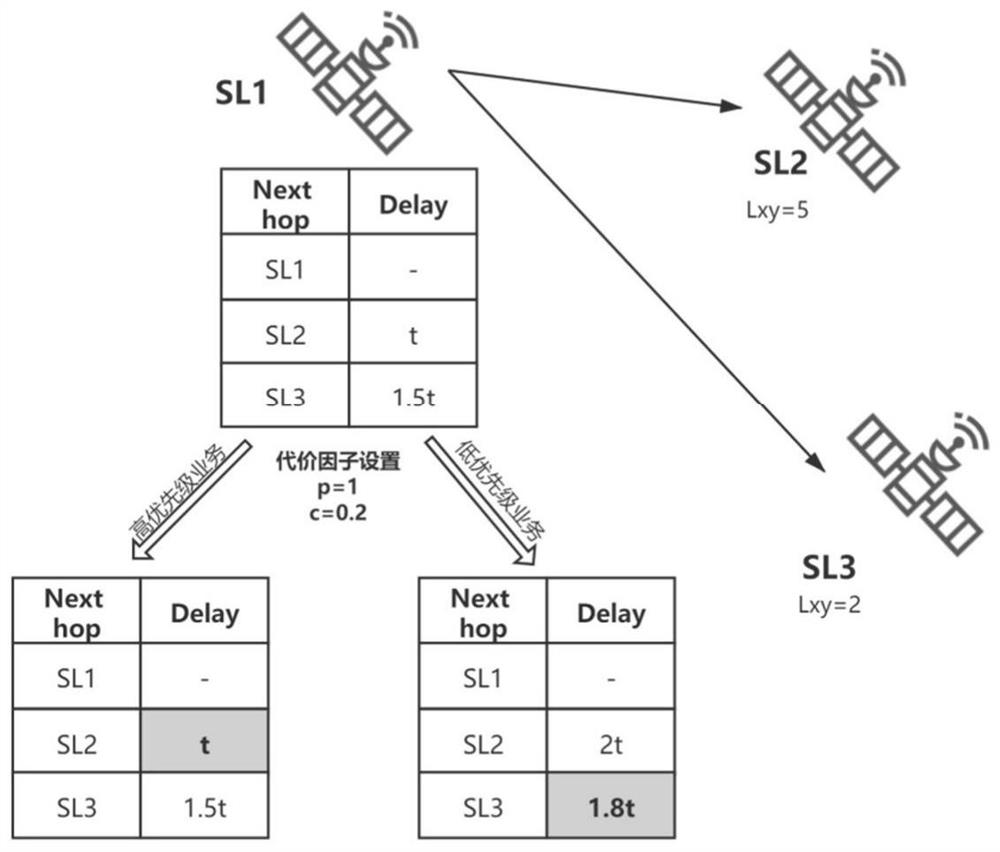Cross-layer routing method and communication system based on MEO/LEO double-layer satellite network
A double-layer satellite network and satellite technology, which is applied to the routing field of satellite networks, can solve the problem of uneven distribution of satellite transmission loads, and achieve the effects of reducing network topology complexity, reducing complex pressure, and improving resource utilization.
- Summary
- Abstract
- Description
- Claims
- Application Information
AI Technical Summary
Problems solved by technology
Method used
Image
Examples
Embodiment Construction
[0037] The present invention will be described in detail below in conjunction with specific embodiments. The following examples will help those skilled in the art to further understand the present invention, but do not limit the present invention in any form. It should be noted that those skilled in the art can make several modifications and improvements without departing from the concept of the present invention. These all belong to the protection scope of the present invention.
[0038] The technical solutions in the present invention will be described in more detail below in conjunction with specific embodiments.
[0039] Step S1: Establish a MEO / LEO two-tier satellite network system model, and perform initial load balancing presets based on the global business traffic model; establish a MEO / LEO two-tier satellite network topology, such as figure 1It can be seen from the coverage zone parameters and topological structure of the satellite constellation that low-orbit LEO s...
PUM
 Login to View More
Login to View More Abstract
Description
Claims
Application Information
 Login to View More
Login to View More - R&D
- Intellectual Property
- Life Sciences
- Materials
- Tech Scout
- Unparalleled Data Quality
- Higher Quality Content
- 60% Fewer Hallucinations
Browse by: Latest US Patents, China's latest patents, Technical Efficacy Thesaurus, Application Domain, Technology Topic, Popular Technical Reports.
© 2025 PatSnap. All rights reserved.Legal|Privacy policy|Modern Slavery Act Transparency Statement|Sitemap|About US| Contact US: help@patsnap.com



